DR Congo. On the verge of collapse.
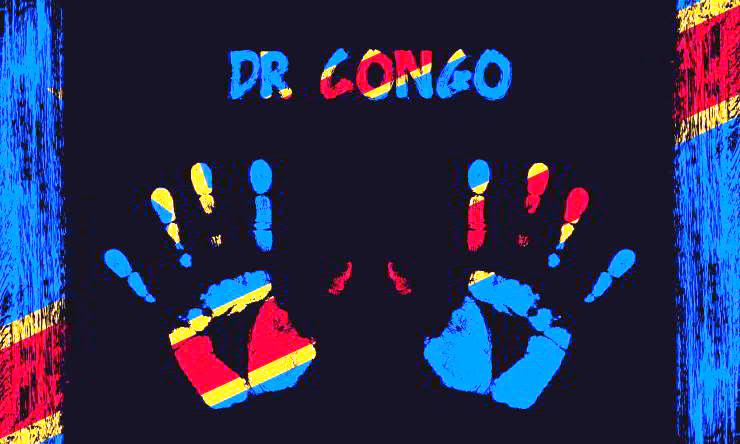
Tshisekedi hires mercenaries, recruits militias, urges foreign armies to assist the Congolese troops to fight the rebel offensive but nothing seems to stop it.
Since the Rwandan-backed M23 rebels resumed the war in the eastern province of North Kivu in 2021, the DRC government has lost large swathes of territory. By September 2024, the rebels had also made progress on the political front. Born as a militia of disgruntled ex-soldiers, mainly Tutsis, of the Armed Forces of the Democratic Republic of Congo (FARDC), the movement is now called the Congolese Revolutionary Army (ARC) and has become the armed wing of the coalition formed in December 2023 by the M23 and the Congo River Alliance, created by the former chairman of the National Independent Electoral Commission (CENI) between 2015 and 2021, Corneille Nangaa, a man from the province of Upper Uélé, who aims to overthrow the regime of President Felix Tshisekedi, which he considers corrupt and illegitimate, following the rigging of the 2023 elections. Today, the M23 and its allies can no longer be described as a Tutsi group.
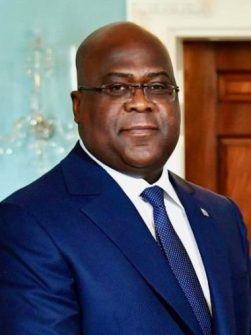
President of the Democratic Republic of Congo, Felix-Antoine Tshisekedi Tshilombo. Photo: Pres.Office
Moreover, in recent interviews, Felix Tshiskedi has accused his predecessor, Joseph Kabila, of complicity with the Nangaa, giving the impression that the rebels are broadening their base, since Kabila’s stronghold is indeed the Katanga region.
On 30 July 2024, a ceasefire was signed between the DRC and Rwanda, which was supporting the rebels. But on 16 August 2024, the deal’s mediator, Angolan President João Lourenço, admitted that negotiations had stalled. Kigali felt that the conditions for the withdrawal of the Rwandan Defence Forces (RDF) from the DRC had not been met. President Paul Kagame suggested on 19 August that the DRC should first “solve the FDLR problem” before asking Kigali to withdraw its troops from Congo. According to Kagame, the DRC should stop supporting the FDLR (the French acronym for the Democratic Forces for the Liberation of Rwanda), which was formed in the aftermath of the 1994 genocide against the Tutsis by former officers of the Hutu-led Rwandan army that perpetrated the massacres, and was supported by the FARDC after they fled to Congo.
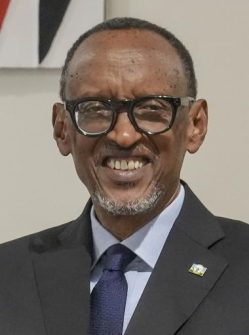
Paul Kagame, President of Rwanda since 2000. CC BY 2.0/WT
The deal requires the DRC to commit to neutralising the FDLR’s 2,000 troops, while Rwanda is expected to withdraw its 4,000 soldiers, accused by the UN of systematic border incursions, supporting the M23 with drones and guided mortars, and controlling the operations of these rebels, who initially wanted to be integrated into the FARDC. By early September, the agreement had not been implemented. And neither the M23, whose leaders were sentenced by a military tribunal in Kinshasa on 9 August 2024, nor the Congo River Alliance (better known by its French acronym AFC) were concerned by the ceasefire.
On 2 August 2024, one of the founders of the AFC, Adam Chalwe, told the Brussels daily ‘La Libre Belgique’ that his group would continue its advance anyway.During August, the rebels continued to march north towards the town of Butembo and Lake Edward, gaining control of areas covered by oil blocks representing a potential bonanza of several billion barrels of crude oil. On 4 August, the M23 captured the town of Ishasha on the Ugandan border without resistance.
Then, on 7 August, the AFC took control of the town of Nyakakoma, home to an important fishing industry.
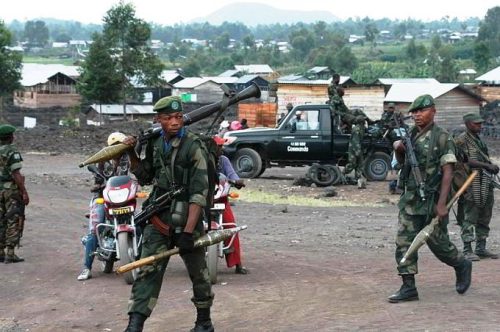
Soldiers of the FARDC in Goma. MONUSCO/Clara Padovan
In Butembo, the capital of the Nande region, the AFC held talks with local authorities last August to allow their fighters to move freely to the gold-rich areas of Ituri province. The Nande have several reasons to accept such a deal. After years of terror by the Ugandan Salafists of the Allied Democratic Forces (ADF), who pledged allegiance to the Islamic State in 2019, Nande businessmen concluded that the AFC-M23 coalition would be more effective against the ADF than the undisciplined FARDC.
For the rebels, the capture of the Ishasha border post means gaining access to tens of millions of dollars a year in customs revenue, while the capture of Nyakokoma allows them to levy taxes on fishing to pay their soldiers and gain greater autonomy to finance the war and reduce their dependence on Kigali and Kampala.
The rebel offensive developed despite the involvement of many actors on the side of the Congolese government. In February, 1,000 men from a private military company called Congo Protection, founded by Horatius Potra, a Romanian ex-French Foreign Legion officer, were hired by Kinshasa to train the FARDC. A second Bulgarian-registered company called Agemira, run by French businessman Olivier Bazin, alias ‘Colonel Mario’, has been contracted to repair and maintain the DRC’s small fleet of warplanes and secure its airfields. It employs dozens of Bulgarians, Georgians and Belarusians.
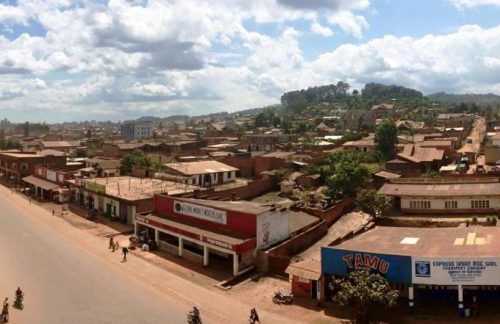
City of Butembo. CC BY-SA 4.0/ Gavin Finnegan
The DRC government also armed local militias on the assumption that it could achieve peace through military force after failing to implement a peace agreement signed with the M23 in Nairobi in 2013, which in fact contributed to the resumption of fighting in 2021. Initially, the M23 agreed to disarm and transform itself into a political party, while a general amnesty was declared for its fighters, except for war crimes. The agreement also included a demobilisation programme, the integration of some fighters into the FARDC and the creation of a commission to settle land disputes. But in the end, the Congolese government preferred to recruit and arm these militias, called “Wazalendo” (patriots in Swahili), even though some of their warlords are under UN or EU sanctions.
The DRC also receives a great deal of foreign aid. In addition to the UN and the EU, which train infantry and artillery officers, the DRC army benefits from 14 bilateral military cooperation agreements. Angola, Belgium, France, South Africa and the US are training or have trained battalions. Belarus and the Ukraine have trained pilots.
The Czech Republic and Russia have provided T-55 tanks and trained officers to operate them. Serbia has sent instructors to military academies. Moroccan trainers are present in the Presidential Guard, which also benefits from the anti-riot and artillery skills of Egyptian experts. China is providing training in logistics and communications, while Russia signed an agreement in March that includes the possibility of joint exercises.
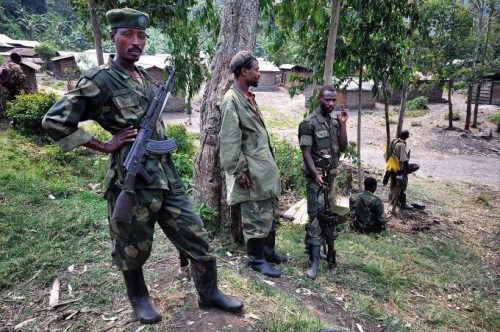
M23 rebels. CC BY-SA 2.0/ Al Jazeera
The mandate of the East African Mission, which expired in December 2023, had become a point of contention between the EAC and Kinshasa. According to the EAC, its force should monitor the withdrawal of armed groups from eastern DRC and ensure that a ceasefire negotiated in December 2022 was respected. But Kinshasa wanted the East African troops to carry out offensive operations. Tshisekedi even accused the EAC force of colluding with the rebels after Kenya refused to crack down on Nangaa, who was allowed to hold a press conference in Nairobi in December 2023. On 15 December 2023, the East African soldiers were replaced by the SADC Mission in the Democratic Republic of the Congo (SAMIDRC), but the latter also failed to make significant gains against the rebels, despite Kinshasa’s claim that the Southern African troops had an “offensive mandate”. By September 2024, SAMIRDC troops remained around Goma, while AFC/M23 troops captured large swathes
of territory further north.
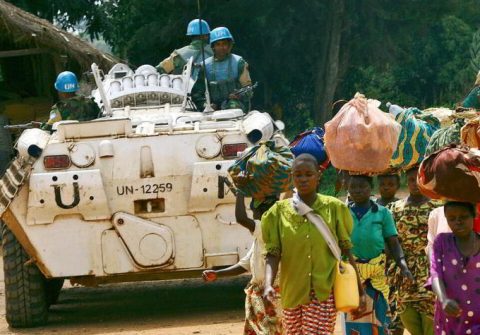
The population of Mutaho fled to Goma following fighting between M23 elements and FARDC soldiers. MONUSCO/Clara Padovan
The ANC’s partner in the new South African governing coalition, the Democratic Alliance, wants to repatriate the 2,900 South African National Defence Force (SANDF) soldiers. In July 2024, the DA’s defence spokesman, Chris Hattingh, said that his party had called for the withdrawal of South African soldiers from the DRC in light of the SANDF’s underfunding and the changing nature of warfare.
As a result, South African soldiers lack the necessary logistical, tactical and medical support and training for high-tech warfare. Moreover, Hattingh told the South African Parliament that the SANDF’s deployment in the DRC was not a peacekeeping mission but an involvement in an undeclared war in which no South African national interest was at stake.
While MONUSCO began withdrawing its 12,000 troops in April 2024, to be completed by the end of the year, the scenario of a third collapse (after 1996 and 1998) of the Congolese state in the face of a rebel army is becoming more likely. (Open Photo: File swm)
François Misser



